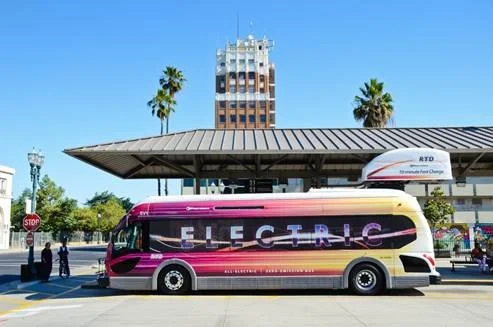California High-Speed Rail Authority
Funded in part by California Climate Investments, the High‑Speed Rail Project has made investments to contribute to economic development and a cleaner environment, support jobs, and conserve and protect agricultural lands. Implementation of the High‑Speed Rail Project provides a variety of benefits to Californians. Estimated GHG emissions reductions from the High‑Speed Rail Project are 84 to 102 MMTCO2e over its first 50 years of operating life, as detailed in the 2023 California High‑Speed Rail Sustainability Report.





















